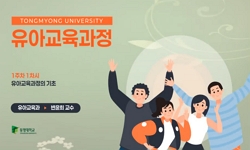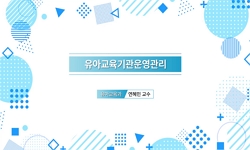Purpose: Recurrent abdominal pain (RAP) is common, affecting between 7% and 25% of school-aged children and young adult. This study was designed to assess the relationship between RAP and depressive trends in school-aged children. Methods: In 1999, We...
http://chineseinput.net/에서 pinyin(병음)방식으로 중국어를 변환할 수 있습니다.
변환된 중국어를 복사하여 사용하시면 됩니다.
- 中文 을 입력하시려면 zhongwen을 입력하시고 space를누르시면됩니다.
- 北京 을 입력하시려면 beijing을 입력하시고 space를 누르시면 됩니다.


학동기 소아에서 반복성 복통과 우울 성향과의 관계 = The Relationship between Recurrent Abdominal Pain and Depressive Trends in School-Aged Children
한글로보기https://www.riss.kr/link?id=A101490152
-
저자
안영준 ; 문경래 ; Ahn, Young-Joon ; Moon, Kyung-Rye
- 발행기관
- 학술지명
- 권호사항
-
발행연도
2002
-
작성언어
Korean
- 주제어
-
등재정보
SCOPUS,KCI등재,ESCI
-
자료형태
학술저널
- 발행기관 URL
-
수록면
166-173(8쪽)
-
KCI 피인용횟수
1
- DOI식별코드
- 제공처
-
0
상세조회 -
0
다운로드
부가정보
다국어 초록 (Multilingual Abstract)
Purpose: Recurrent abdominal pain (RAP) is common, affecting between 7% and 25% of school-aged children and young adult. This study was designed to assess the relationship between RAP and depressive trends in school-aged children. Methods: In 1999, We surveyed 1,181 elementary school children (566 boys and 615 girls) whose ages ranged from 9 to 12 years. The degree of depression was compared between the group with RAP and normal control group without RAP according to Korean Children's Depression Inventory (CDI) of Kovacs and Beck. Results: The number of the group with RAP was significantly higher in female (25.7%) than in male (18.9%). The most common site of abdominal pain was periumbilical. The mean depression score in the group with RAP was higher than that of the control group. The depression score was significantly higher in the group with RAP who has frequently pain and additional symptoms. The depression score was significantly higher in the group with RAP who prefered to play alone, did not enjoy going to school and had few friends than in the group with RAP who had a lot of friends, had active and meticulous characters. The depression scores were not significantly different according to the duration of abdominal pain, the onset time of pain, and the day of pain in the group with RAP. Conclusion: The depression score of the group with RAP was higher than that of normal group. So, there is relatively a specific association between childhood RAP and depression in school aged children. It is good for physicians to consider psychological support in the treatment of childhood RAP.
동일학술지(권/호) 다른 논문
-
Helicobacter pylori 감염과 철 결핍의 관계: 937명의 사춘기 환아의 혈청 유병률 연구
- 대한소아소화기영양학회
- 김상종
- 2002
- SCOPUS,KCI등재,ESCI
-
- 대한소아소화기영양학회
- 이민혜
- 2002
- SCOPUS,KCI등재,ESCI
-
소아 Clostridium Difficile 장염과 관련된 항생제에 대한 연구
- 대한소아소화기영양학회
- 김병찬
- 2002
- SCOPUS,KCI등재,ESCI
-
소아에서 비장티푸스성 살모넬라 위장관염의 임상양상과 항생제 내성률에 대한 연구
- 대한소아소화기영양학회
- 나소영
- 2002
- SCOPUS,KCI등재,ESCI
분석정보
인용정보 인용지수 설명보기
학술지 이력
| 연월일 | 이력구분 | 이력상세 | 등재구분 |
|---|---|---|---|
| 2023 | 평가예정 | 해외DB학술지평가 신청대상 (해외등재 학술지 평가) | |
| 2020-01-01 | 평가 | 등재학술지 유지 (해외등재 학술지 평가) |  |
| 2013-01-01 | 평가 | 등재학술지 유지 (등재유지) |  |
| 2012-04-03 | 학술지명변경 | 한글명 : 대한소아소화기영양학회지 -> Pediatric Gastroenterology, Hepatology & Nutrition외국어명 : Korean J Pediatr Gastroenterol Nutr -> Pediatric Gastroenterology, Hepatology & Nutrition |  |
| 2010-01-01 | 평가 | 등재학술지 유지 (등재유지) |  |
| 2007-07-06 | 학회명변경 | 영문명 : The Korean Society Of Pediatric Gastroenterology And Nutrition -> The Korean Society of Pediatric Gastroenterology, Hepatology and Nutrition |  |
| 2007-01-01 | 평가 | 등재학술지 선정 (등재후보2차) |  |
| 2006-06-27 | 학술지명변경 | 외국어명 : 미등록 -> Korean J Pediatr Gastroenterol Nutr |  |
| 2006-01-01 | 평가 | 등재후보 1차 PASS (등재후보1차) |  |
| 2005-05-30 | 학술지등록 | 한글명 : 대한소아소화기영양학회지외국어명 : 미등록 |  |
| 2005-01-01 | 평가 | 등재후보 1차 FAIL (등재후보1차) |  |
| 2003-07-01 | 평가 | 등재후보학술지 선정 (신규평가) |  |
학술지 인용정보
| 기준연도 | WOS-KCI 통합IF(2년) | KCIF(2년) | KCIF(3년) |
|---|---|---|---|
| 2016 | 0.07 | 0.07 | 0.09 |
| KCIF(4년) | KCIF(5년) | 중심성지수(3년) | 즉시성지수 |
| 0.09 | 0.1 | 0.367 | 0.03 |




 ScienceON
ScienceON






